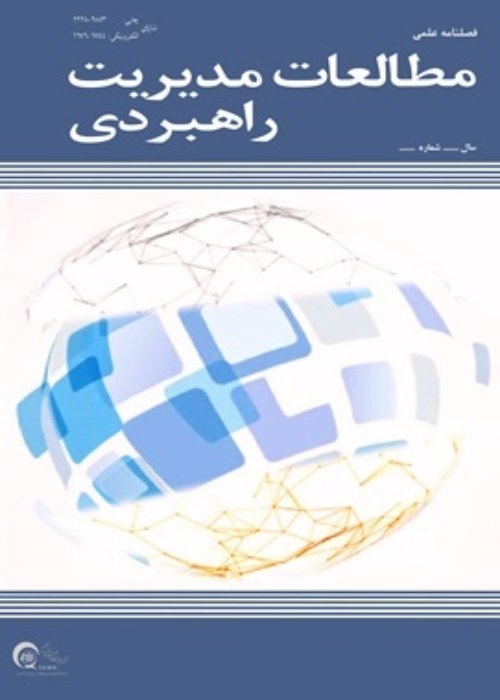Identifying the Knowledge Structure and Research Trend of the Field of Dynamic Capabilities by Topic Modeling
The dynamic capabilities perspective seeks to provide an appropriate explanation for how successful firms are coping with rapidly changing business environments and creating competitive advantages to respond to consistent environmental changes. Although the dynamic capabilities perspective is one of the most prominent theories in the management discipline and has affected the different subfields of this discipline, remarkable concerns have arisen about the intellectual structure of this perspective’s literature and its field of research. Dispersion and clutter of theoretical foundations, confusing plurality and diversity of conceptualizations, lack of a holistic framework of existing views, disconnected understandings and findings, and lack of coherence in the body of knowledge are instances of these concerns. Accordingly, the current study aims to develop a holistic insight into the topical structure and trend of the field and contribute to addressing the concerns challenging the identity of the literature as a whole unit by comprehensively reviewing the scholarly documents on dynamic capabilities.
The present study has used the text mining approach and topic modeling method. This approach and method is a powerful tool that can be used to analyze a huge amount of documents in a short time and with the required efficiency. For this purpose, first, articles in English-language journals related to the subject of dynamic capabilities and indexed in one of the Web of Science or Scopus databases until the beginning of 2019 were collected as the target collection of documents. Then, considering that the abstract of a research is the extract of its main findings and reflects the highlights of the study, the abstracts of the collected documents were considered as the set of texts required for textual analysis. After storing the bibliographic information of the retrieved documents and deleting duplicate documents or items without abstract, the number of abstracts reached 4206. In the next step, in order to pre-process and clean the collected text, measures such as unifying the uppercase and lowercase letters of the words, removing numbers and punctuation marks, deleting stop words, and merging the words with the same stem were performed. In addition, words with insufficient value were identified and eliminated using one of the common valuation criteria. Finally, using the latent Dirichlet allocation algorithm, topic modeling of the collected abstracts was performed, as a result of which the topical structure of the corpus and the temporal trend of each topic were obtained.
As a result, the topical structure and thematic trends in the field of dynamic capabilities were obtained. The topical structure refers to twelve prominent topics in the field of dynamic capabilities that revealed as a result of topic modeling, and the thematic trends refer to the publication trend of scientific documents related to each of these topics. Each topic is a group of words that contains a probabilistic distribution of all the words in the corpus. In this group, the words that have the greatest proportions represent the dominant theme. The identified topics are: 1. Firm performance (focusing on the relationship between dynamic capabilities and firm performance), 2. Organizational implications (by the operational implications of dynamic capabilities for organizations), 3. Organizational change (by the transformational role of dynamic capabilities in organizations), 4. Theoretical framework (focusing on the theoretical concept, principles, assumptions, background, and development of dynamic capabilities), 5. Competitive advantage (based on the role of dynamic capabilities in creating firms’ competitive advantage), 6. Technological alliance (focusing on technological alliance capability as a dynamic capability), 7. Product/service innovation (focusing on innovation capability as a dynamic capability), 8. Innovation performance (focusing on the relationship between innovation as a dynamic capability and organizational performance), 9. Knowledge network (by networking and knowledge management capabilities as dynamic capabilities), 10. International market (focusing on the role of dynamic capabilities in responding to the need of competitive advantage creation in the face of ever-changing international environments), 11. Information technology (focusing on the information technology and information systems-enabled dynamic capabilities), and 12. Supply chain (focusing on the dynamic capabilities of supply chain and operation). The revealed thematic trends stated that among these topics, topic 8 (i.e., innovation performance) is an emerging topic in the field of dynamic capabilities, and also, other topics have had a growing trend in recent years.
As a complementary study, the results of the topic modeling can be presented through some questionnaires or interviews to experts in the field of dynamic capabilities to benefit from their specialized feedback to achieve a more accurate interpretation and conceptualization. In addition, it is worth noting that the use of text mining approach and topic modeling method in comparison with the use of conventional review approaches such as meta-synthesis and systematic literature review methods, provides only an overview that some researchers consider a limitation of this type of analysis. Therefore, researchers can develop some particular methods of textual analysis to overcome this limitation to some extent, or use these methods in cases where the benefits of this type of analysis (such as rapid analysis of large volumes of texts, avoidance of mental judgments, and development of an overview perspective on the knowledge structure and research trend of a field of study) can overcome the limitation. Researchers interested in studying dynamic capabilities are also suggested to carefully examine the scope of each of the topics identified in the present study to deepen the structure presented in this study and to enumerate its underlying layers. In the meantime, according to the results, addressing performance and innovation-related issues has a higher priority in the dynamic capabilities literature. In addition, it is worth noting that due to the limited number of documents related to each of these topics, researchers can use qualitative methods along with text analysis and scienceometrics techniques to achieve this end.
- حق عضویت دریافتی صرف حمایت از نشریات عضو و نگهداری، تکمیل و توسعه مگیران میشود.
- پرداخت حق اشتراک و دانلود مقالات اجازه بازنشر آن در سایر رسانههای چاپی و دیجیتال را به کاربر نمیدهد.


